This shared definition of job quality was created collaboratively by leaders in business, labor, workforce development, and policy as part of the Good Jobs Champions Group, an initiative of the Aspen Institute Economic Opportunities Program and the Families and Workers Fund. The definition provides a framework for understanding job quality, dividing the components of a good job into three categories: economic stability, economic mobility, and equity, respect & voice.
This resource from the National Center for Employee Ownership offers a quick overview of four forms of employee ownership: Employee Stock Option Plans (ESOPs), Equity Grants, Employee Owned Trusts, and Worker Cooperatives. The resource gives an introduction to which types of companies these forms of employee ownership are best suited to, the tax implications, how equity works within each model, and more questions on governance and execution.
This toolkit is designed to equip organizations and businesses with strategies to support employee mental health during the coronavirus pandemic but is relevant as a resource on supporting employee mental health across settings. The guide can be used as an informational document or as a presentation to leaders and managers, including human resources teams and organizational leaders. Included are recommendations to build a culture of empathy and support, links to external resources, and examples of company practices. Individuals supporting businesses or workers may also find the toolkit useful to share with employers to encourage practices that support employee mental health.
This corporate response tracker aggregates ways the US’ largest businesses responded to the coronavirus crisis, with links to more specific descriptions of the policies implemented. Employers, practitioners and policymakers alike may find this tool useful in looking back at the impact and response to the outbreak of COVID-19 and in identifying policies that can support workers in similar public health emergencies. See Just Capital’s additional resources for examples of businesses centering worker interests in their coronavirus responses.
This online training addresses common questions about COVID-19 in food service settings and offers practical steps that chefs, supervisors and workers can take to keep themselves and diners safe during COVID-19 and other health emergencies. The training includes best practices for restaurants as well as a unit on creating personal health plans for workers. This guide can be used by employers as well as worker advocates and others who work closely with employers.
This resource provides guidance related to seven health and safety questions that small businesses have grappled with since the start of the pandemic. For each question, the authors include practical information, examples of steps taken by other small businesses, and links to helpful resources. Topics covered include creating an equitable and inclusive environment, recognizing and responding to workers’ caregiving responsibilities, and communicating about and ensuring workplace safety. Although written for small business owners, this resource may also be useful for larger employers as well as individuals that work with businesses, including economic development, investing and lending, and workforce development professionals.
The Employer Engagement Question Bank is designed to help workforce professionals engage in conversations with businesses to support the job seekers they work with. This tool can be used to learn about a business with an eye toward providing workforce services, developing expertise about industry norms and practices, and building relationships that build credibility in discussions about strategies for promoting worker retention and advancement. The tool includes questions to build understanding of the business, its workforce needs, and a range of job quality factors including compensation, opportunities for advancement, and equity and inclusion. Workforce development practioners and other professionals who support workers can adapt the tool to meet their employer engagement goals.
This resource provides guidance on language to help organizations more effectively communicate about racial economic equity. This document includes definitions of important terms and concepts for understanding racial economic equity, the racial wealth divide, and racial wealth equity as well as design guidelines on visually depicting diverse communities. This guide has relevance for a range of organizations interested in communicating about the important link between racial equity and job quality for those who want to advance racial equity.
This webpage offers guidance on how to protect the health and safety of domestic workers during the COVID-19 pandemic. Included are resources specifically for different domestic work occupations, such as housecleaners, nannies, and caregivers. There is guidance on how to speak with employers about returning to work and sample agreements between workers and employers to ensure safety in the workplace. These resources are geared towards domestic workers, but can also be used by worker advocates, workforce professionals, and employers to support worker safety–and can be applied to public health emergencies beyond COVID-19.
The future of work has received an avalanche of attention over the past several years from the media, academics, and policymakers. However, most discussion has been theoretical and speculative. And the challenges facing opportunity youth have largely been left out of this conversation. Given this context, the Aspen Institute Economic Opportunities Program and Aspen Institute Forum for Community Solutions, with support from the Citi Foundation, developed a practical approach and toolkit that community leaders can use to begin to learn how the future of work is playing out right now in their local economies. The toolkit includes a framework and questions to guide conversations with employers and young adults to learn from them about the nature and structure of work in specific occupations and what’s changing now; a guide to resources for conducting background labor market research to inform conversations; and sights from three organizations that pilot-tested the approach and toolkit in their communities
